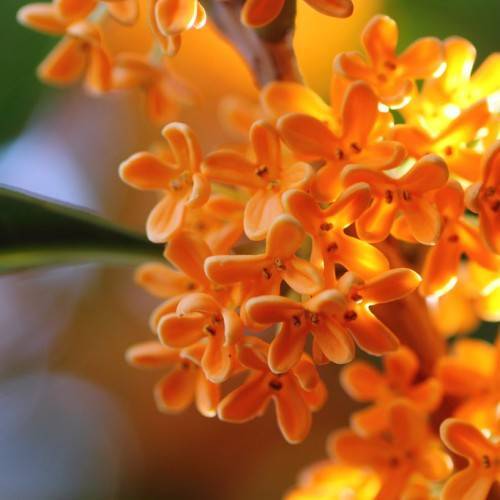
fragrant tea olive
Osmanthus fragrans f. aurantiacus
Cycle:
Perennial
Watering:
Average
Hardiness Zone:
8 - 11
Flowers:
Flowers In Spring
Sun:
Full sun,part shade
Leaf:
Yes
Growth Rate:
Low
Maintenance:
Moderate
Drought Tolerant:
Yes
Salt Tolerant:
Yes
Care Level:
Medium
watering
The fragrant tea olive (Osmanthus fragrans f. aurantiacus) is a hardy, drought-tolerant shrub. As such, it does not require a lot of watering. In fact, the shrub actually prefers dry soil which helps it to thrive better. In general, the fragrant tea olive should be watered once or twice per month with approximately 1 to 2 inches of water. Watering should be done deeply, soaking the roots of the shrub. It is important to avoid overwatering the plant as this can lead to rot or disease. When watering, try to make sure the water is reaching the roots and not just the surface. In periods of extreme heat, the fragrant tea olive will require more frequent watering in order to maintain its health. During these times, increase the water frequency to once weekly. Make sure to soak the root system deeply, and also provide enough water to keep the soil evenly moist. Overall, the fragrant tea olive is a robust shrub that does not require a lot of TLC. To keep it healthy and thriving, use a moderate watering schedule of 1-2 inches of water omce or twice per month throughout the year and increase to weekly during periods of high heat.
sunlight
Fragrant tea olive (Osmanthus fragrans f. aurantiacus) requires a minimum of 6-8 hours of direct sunlight each day. It should be planted in a spot that receives full to partial sun throughout the day to ensure optimal flowering and health of the plant. Ideally, the plant should be placed in an area that receives some morning sun and some afternoon shade to help protect its leaves and blossoms from sunburn. If possible, it should be sheltered from high winds to protect its delicate leaves and petals. This species blooms twice a year, typically in the spring and again in the fall.
pruning
Fragrant tea olive (Osmanthus fragrans f. aurantiacus) can be pruned twice a year, once in the spring after flowering and once in fall. Pruning helps keep the size of the plant in check and encourages fuller branching and blooming. In the spring, prune the shrub lightly to reduce the overall size and shape and to get rid of dead or damaged branches. Make sure to leave younger, parts of the plant unpruned as they bloom more profusely than older branches. In the fall, prune out the shoots that are growing too large or in the wrong directions. During this pruning, cut out the old wood to encourage the growth of fresh, younger wood which will help flowers to bloom. The amount of pruning needed depends on the size, age and overall shape of the plant. Start slowly and conservatively, only removing what needs to be removed. Prune old wood to encourage new growth, rather than cutting into green, actively growing parts of the plant.
